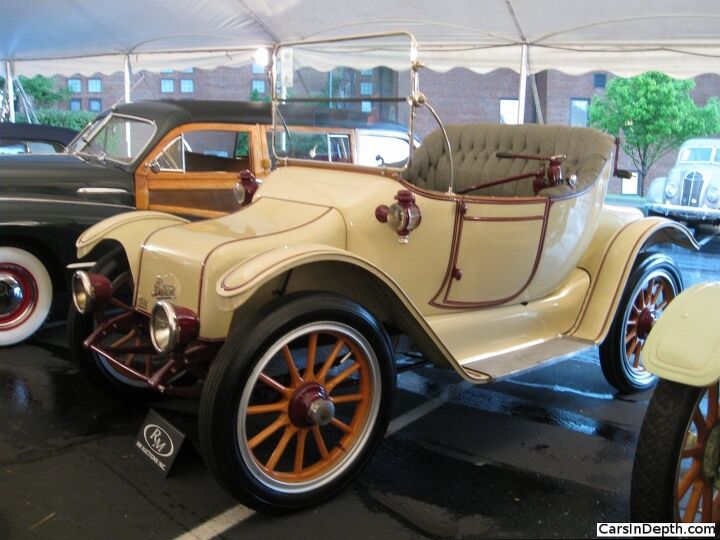Revived Detroit Electric Brand to Open HQ in Detroit and Sell Electrified Exiges

Until the modern day revival of electric vehicles like the Teslas, Nissan’s Leaf or the Chevy Volt, the best selling electric car ever was the Detroit Electric, produced by the Anderson Carriage company from 1907 to 1939. They sold thousands of them (1914 was the high water mark with ~4,500 produced). Among the people who drove Detroit Electrics were electricity pioneers Thomas Edison and Charles Steinmetz and the wives of automotive industrialists Henry Ford and Henry Joy (he ran Packard). Interestingly, John D. Rockefeller, who made his enormous fortune from petroleum products like gasoline, owned a pair of Detroit Electric Model 46 Roadsters. Now, not only has the electric car industry been revived, but also the Detroit Electric company, which says it will start producing battery electric sports cars in a Michigan facility by the end of this summer. Following Tesla’s example, their first car will be based on a Lotus, in this case an Exige coupe, and the company promises two other “high performance” models in 2014.
Teaser of the Lotus Exige based Detroit Electric sports car
Using a Lotus glider as the basis of an EV, as mentioned, isn’t a particularly original idea. Besides the Tesla Roadster if you remember, before their bankruptcy, Chrysler showed a raft of electric powered concept cars including the Circuit EV based on the Elise derived Europa. With aluminum superstructures and composite bodies, Lotus cars are light enough to still have good performance after being fitted with heavy electric battery packs. The choice of the Exige is an interesting one since that car is not sold in the United States – apparently because of a regulatory issue with its airbags. Perhaps Detroit Electric’s chairman and CEO, Albert Lam, who used to run Lotus, will use his connections with the British firm to get the gliders federalized.
John D. Rockefeller had two Detroit Electric Model 46 Roadsters, like this one for sale at RM’s 2012 St. John’s auction
In addition to announcing that Detroit Electric is going to be more than just a placeholding website that’s been around since Lam acquired the rights to the brand and logo in 2008, the company has signed a lease for its headquarters to be located in Detroit’s historic and automotively connected Fisher Building. The new car will have a press launch in Detroit early next month, followed by a global reveal at the Shanghai auto show later in April. In addition to signing the lease on their HQ, Detroit Electric has selected what they call a “dedicated production facility” in Michigan that will have an annual capacity of 2,500 cars a year. Since they’re working with the quasi-governmental Michigan Economic Development Corporation, most likely it will be a facility that has formerly been used to build relatively short production runs of specialty cars. My WAG would be either the facility in Troy where Saleen did final assembly of the Ford GTs, or the former GM Lansing Craft Centre that built the Chevy SSR. Between the offices in Detroit and the production plant, Detroit Electric hopes to create 180 new jobs in Michigan over the next year.
Detroit Electric logo on the aluminum running board of Helen Newberry Joy’s 1914 Detroit Electric. Note the broken shoe scraper.
Apparently that production facility will not be owned by Detroit Electric. Before working at Lotus, Lam’s resume includes stints in Asia with Apple and Sun Microsystems, and Detroit Electric will be following an “asset light” business model, focusing on R&D and marketing and jobbing out production.
When the new Detroit Electric sports car is first revealed next month we’ll have coverage of the event. Press release here.
Ronnie Schreiber edits Cars In Depth, a realistic perspective on cars & car culture and the original 3D car site. If you found this post worthwhile, you can get a parallax view at Cars In Depth. If the 3D thing freaks you out, don’t worry, all the photo and video players in use at the site have mono options. Thanks for reading – RJS

Ronnie Schreiber edits Cars In Depth, the original 3D car site.
More by Ronnie Schreiber
Latest Car Reviews
Read moreLatest Product Reviews
Read moreRecent Comments
- MaintenanceCosts Nobody here seems to acknowledge that there are multiple use cases for cars.Some people spend all their time driving all over the country and need every mile and minute of time savings. ICE cars are better for them right now.Some people only drive locally and fly when they travel. For them, there's probably a range number that works, and they don't really need more. For the uses for which we use our EV, that would be around 150 miles. The other thing about a low range requirement is it can make 120V charging viable. If you don't drive more than an average of about 40 miles/day, you can probably get enough electrons through a wall outlet. We spent over two years charging our Bolt only through 120V, while our house was getting rebuilt, and never had an issue.Those are extremes. There are all sorts of use cases in between, which probably represent the majority of drivers. For some users, what's needed is more range. But I think for most users, what's needed is better charging. Retrofit apartment garages like Tim's with 240V outlets at every spot. Install more L3 chargers in supermarket parking lots and alongside gas stations. Make chargers that work like Tesla Superchargers as ubiquitous as gas stations, and EV charging will not be an issue for most users.
- MaintenanceCosts I don't have an opinion on whether any one plant unionizing is the right answer, but the employees sure need to have the right to organize. Unions or the credible threat of unionization are the only thing, history has proven, that can keep employers honest. Without it, we've seen over and over, the employers have complete power over the workers and feel free to exploit the workers however they see fit. (And don't tell me "oh, the workers can just leave" - in an oligopolistic industry, working conditions quickly converge, and there's not another employer right around the corner.)
- Kjhkjlhkjhkljh kljhjkhjklhkjh [h3]Wake me up when it is a 1989 635Csi with a M88/3[/h3]
- BrandX "I can charge using the 240V outlets, sure, but it’s slow."No it's not. That's what all home chargers use - 240V.
- Jalop1991 does the odometer represent itself in an analog fashion? Will the numbers roll slowly and stop wherever, or do they just blink to the next number like any old boring modern car?


































Comments
Join the conversation
I've heard this story too many times. It usually ends with shareholders left with useless paper, employees waking up one morning to discover the company is in foreclosure, and the principles in said corporation making their way to some island that doesn't have an extradition treaty with the U.S. The niche for this sort of product is so narrow it's virtually non existent. EV's seem to as being something that people are 'for' but not necessarily something that people 'want.'
I just reaized that this is a cleverly-disguised bailout plan for Lotus. How else are they going to sell any product?